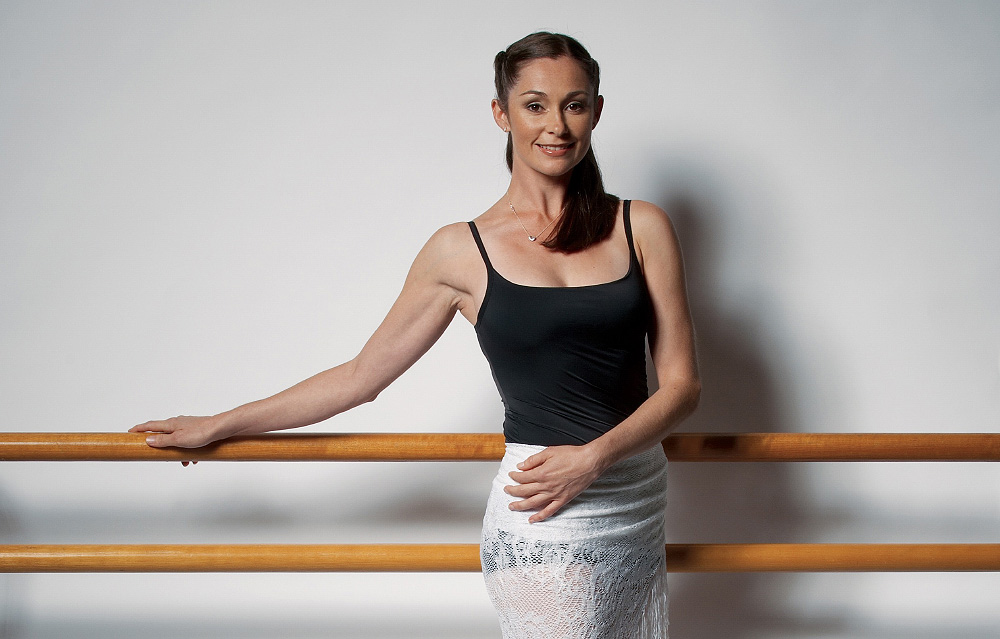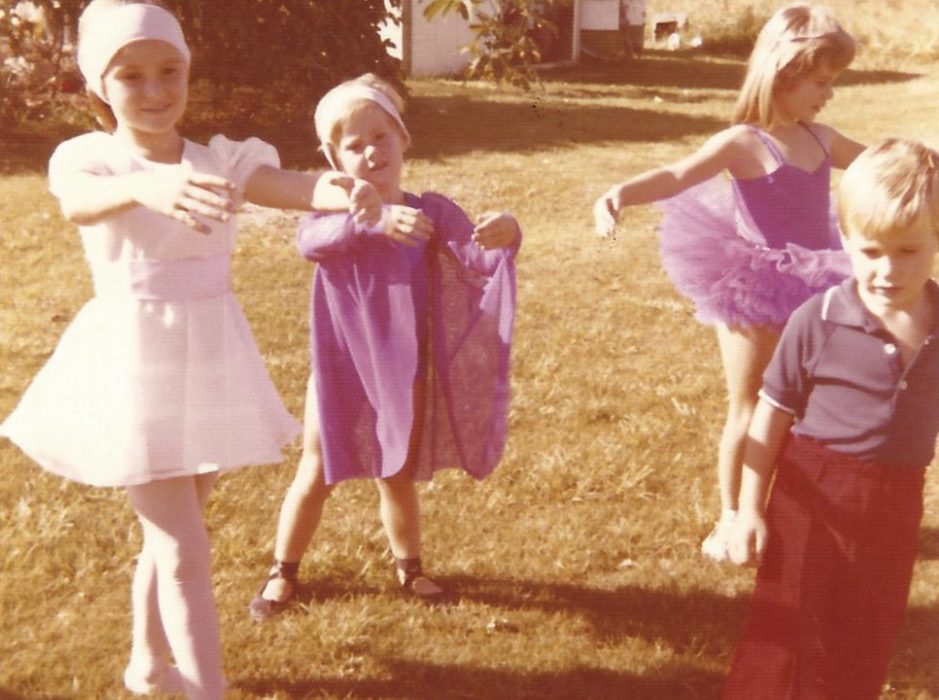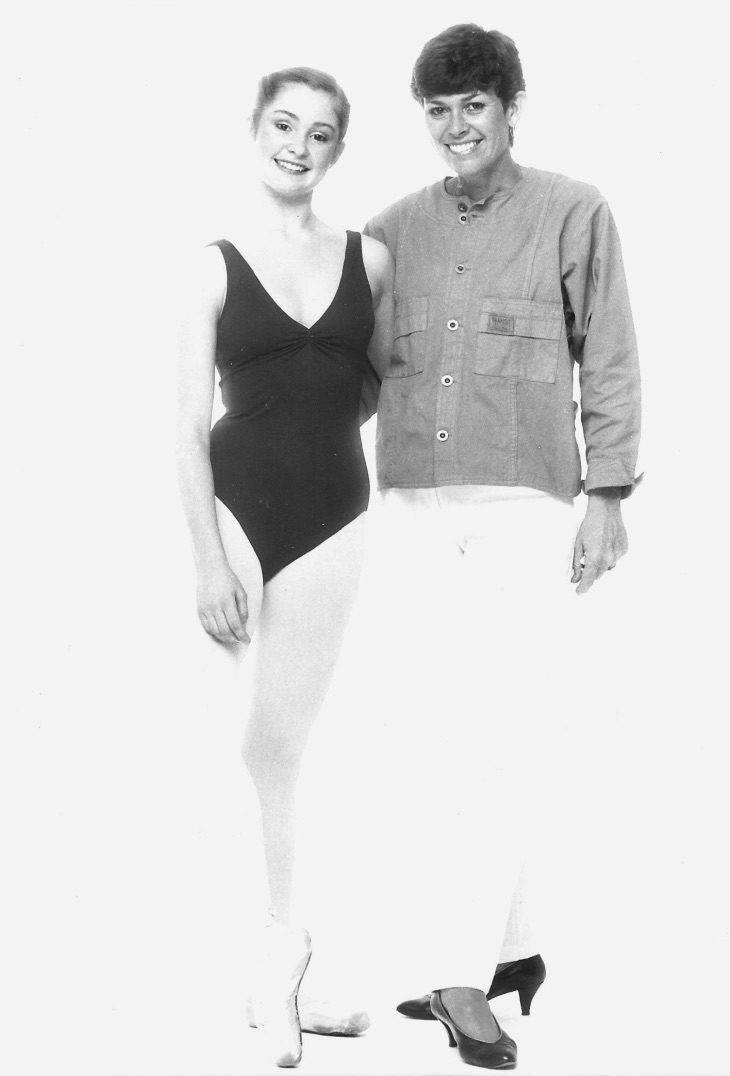Artistic and Holistic Interview
This interview with Lisa Bolte by Sarah Rose was published on August 14th 2021 on the Artistic and Holistic Website. Artistic and Holistic is a blog committed to gathering insights on a holistic approach to dance and the art of life.
It is my honour to share these insights to the wonderful mind of Lisa Bolte. Lisa was so open with the wisdom she gained throughout her illustrious career, and this interview dives into all the highs and lows ballet entails. Rapid promotions, battling injuries, becoming a mother, returning to stage, studying at university… Lisa has done it all, and learnt so much in the process. I am beyond inspired by her story, and know you will be too.
Disclaimer* all of Lisa’s amazing insights could not be put into a blog post word for word. Hence, some of their answers have been condensed with her approval.
What has your career path been so far?
I was always dancing around the living room as a child, and began dance lessons at the age of 7, traveling around 40 minutes to my local dance school. As soon as I started classes, I fell head over heels in love with the art form. At the age of 8, Mum sent me to Caprice Dancing School where Margaret Lucas, Janice Schoenauer and Sandra Ashley nurtured me through the formative years. A wonderful opportunity in my early training came when I was 12, in joining the Australian Youth Ballet. I performed all over Australia, even traveling to the United Kingdom with the Australian Youth Company. I’m so grateful to Inara Svalbe for those experiences.
After year 10, I joined the first cohort of what became Queensland Dance School of Excellence, it was an excellent opportunity and next step. Up until then, I had studied RAD and CSTD syllabuses, performing in eisteddfods and concerts, still, I was quite naive about what a ballet career entailed. During this time of learning, it was suggested to me that I consider auditioning for the Australian Ballet School, so I went home and told Mum. Not long after I auditioned for Dame Margaret Scott, Marilyn Rowe, and Colin Peasley I received my acceptance letter! The thought of not accepting my place never really crossed my mind, my parents were very supportive and I just knew I had to go. Coming from a very tight knit family, moving away at 16 was extremely daunting. I was homesick in Melbourne at first, however, I absolutely needed to dance. Whilst intensively training with the Australian Ballet School for three years, I was blessed with some lead roles, including, for my 3rd year graduation, having the role of Sugar Plum Fairy for Robert Ray’s ‘Nutcracker’ created on me. The day after our final performance, we went into individual meetings with The Australian Ballet Company’s then Artistic Director, Maina Gielgud. I was offered a contract! It felt strange, in a way, to transition to a professional whilst being in the same building I had known as a student. My first year in the company held a great deal of learning. I was blessed with exciting opportunities, particularly as the Lead Bridesmaid in ‘Don Quixote’ and soloist roles in Maina’s premiere season of ‘Giselle’.
Maina promoted me to Coryphee at the end of my first year, then rose quite quickly through the Ballet’s ranks. I was promoted to Senior Artist after the final show of our 1990 tour of the USA. In contrast to these highs in my professional life, I battled with some serious injuries; at that time there was far less known about injury rehabilitation. I had recurring stress fractures, and from the age of around 24 until 27, things felt really rocky. I was constantly having to take time off for stress fractures, and that’s never easy. I also developed a cone shaped fracture in my talus bone, which had the potential to end my career. The Australian Ballet was fabulous, and alongside working with a great team of Australian doctors, I was sent to New York where I received the best treatment possible. It got to the stage where my doctors suggested that I start looking at other career possibilities, they just didn’t know if returning to ballet would be a viable option. This was heartbreaking to hear, I felt like I had only scratched the surface of my capabilities, quitting wasn’t an option. It took lots of strength work, and alongside anti-inflammatory medication, icing etc, I eventually made it back to the stage. After my experience with this injury, I decided to take the pressure off and just see what I could do. In 1993 I was promoted to Principal Artist with The Australian Ballet.
Flash forward a few years to 2002 and the Company was in the midst of creating Graeme Murphy’s ‘Swan Lake’, Graeme had asked me to portray the role of Camilla, however, during the initial rehearsal process I became pregnant. The Company’s Artistic Director at the time, David McAllister, was very kind and said I could keep dancing for as long as I was able to, which ended up being around 20 weeks… and then it came time for me to retire. It was not possible for me to continue my career and become a mother, in the way it is for today’s dancers, the same support systems were not yet in place. I had no expectations of ever dancing again, I was fulfilled in my career and felt blessed to be raising my gorgeous daughter.
In 2004 I received a call from David McAllister, ‘La Sylphide’ was to be in next season’s repertoire and David asked me to reprise the principal role of the Sylph. During my time away from the stage, my relationship had gone through a tumultuous time – one that taught me a great deal of resilience. Three years on from believing I would never dance again, and now with this opportunity I thought, ‘I can only say yes and do my best’.
During rehearsal days I brought my daughter into the studio, that was such a special experience. The dancers embraced us and would help me look after Olivia. They were cherished times for us both. I danced the Melbourne and Sydney seasons, and to my great joy, it was a success! I jumped back into performing life with The Australian Ballet. Then in 2007, I retired with performances of the Sugar Plum Fairy in Sir Peter Wright’s ‘The Nutcracker’, which felt a very full circle.
Through a connection with Deakin University, I decided that studying there would be a great next step. I enrolled in a Master of Arts which led to a creative development project. Supplementing my income with teaching and adjudication. Upon completion of my degree, I took up a position in the philanthropy team of The Australian Ballet Company, in 2011. I loved the way this work reconnected me with the dance community. During this time, I took two inspirational stints away, to work in the ballet studio assisting Maina Gielgud in staging ‘Giselle’ at Boston Ballet and ‘La Sylphide’ at Teatro dell’Opera di Roma.
When my daughter began high school I wanted to have more time with Liv and with Graeme, my husband. I stepped away from my philanthropy role and I began teaching again. I love teaching students who are serious about ballet, watching them grow over the year is a rewarding experience. I continue to maintain a connection with The Australian Ballet through a voluntary philanthropic position as co-chair of The Australian Ballet Ambassador Program.
Is there anything you particularly focus on when preparing to teach a class?
Whilst it’s important to take the time to refine the difficult steps and build strength when you are a teenager, I feel it is vital to keep a class moving. Dance is about moving to music and if you don’t keep moving, it’s so hard to learn coordination, dynamics and musicality. At the end of the day, class has to prepare us to perform on a stage. The beauty of this art form is passing what you know down to the next generation. Ballet is not like a painting that keeps forever, it continues to exist only in our hearts and minds.
Do you feel the struggles you see ballet students face today are similar to those of your early ballet days? Or do you feel a change of times has changed the types of challenges you see?
I think there have been a lot of changes for the better. Today there is more knowledge about the medical side of dance, and top companies now have great medical teams in place. There is more knowledge available of how to stay in shape for a career, nutrition for dancers and athletes, and safer exercise programs. I feel dance today may be more competitive, with ever-more numbers of aspiring dancers than contracts available. There are more distractions for the current generation of dancers, for instance, social media can be a great tool for development, however it can become all-consuming. The hard work still needs to be done in the studio.
Did injury rehabilitation ever give you a new lens through which to approach your art form?
Being injured really opened my eyes to the fragility of a ballet career, it helped me be grateful for every moment I had on stage. Injury rehabilitation was a great lesson in staying positive and working with diligence. Time spent getting back to ballet helped me cultivate a lot of resilience.
Were doubts and insecurities something that were present through your career?
I think everyone deals with doubts and insecurities in one form or another. Body image issues is something I feel remains prevalent in the ballet world today, during the 80’s when I was first dancing professionally it was very much ‘thin was in’. As a dancer you are always comparing yourself to others, really you shouldn’t be, you should only focus on you…. But it can be hard not to compare. There is current knowledge on good nutrition available to help today’s dancers, unfortunately, poor advice given to me early on and that did take a long time to rectify. Being a teacher now, I find it so important to instill a sense of pride in my students when it comes to them viewing their own bodies. A ballet career is not something that you want to be ‘ill’ for. Dancers ask a lot from their bodies, you want to be healthy and still have the option to have children. Only take advice from qualified people who understand both dance and nutrition.
Like many, I experienced doubts and insecurities about my dancing, however, I found the best way to combat this was by stepping away from what other people thought and just working for myself. Not all Choreographers and Directors will like you, and it’s hard not to take that personally. It’s so important to find your own value within yourself and not rely on the opinion of others, otherwise it can feel like you are sinking. You want to finish your career in a good mental space, ready to take on the next adventure, not feeling defeated from years of self-doubt. One thing that helped me with these doubts and insecurities was seeing a sports psychologist.
What do you feel your biggest strength as a dancer was?
I was able to convey genuine emotion from the stage, also I had a lyrical quality the audience enjoyed. I loved dancing roles that allowed me to tell a story. It was satisfying delving into books, finding sources of inspiration from life experiences while preparing for roles, these were important elements that helped grow my performances.
What was the thing you felt you had to work hardest at in ballet?
Early in my career it was definitely jumping. Dancing ‘La Sylphide’ gave me a great opportunity to work on my allegro. Learning to coordinate my entire body in the Danish Bournonville style while dancing to the music helped me a lot. I feel visualisation was a great tool for enhancing my dancing.
They say the pen is mightier than the sword, so if you could scribe one word to use as your weapon in life what would it be?
Positivity.
Try to always find the positive. Sometimes that’s harder than others, but it’s always worth it.
What perceived ‘failure’ has turned into your most helpful lesson on your journey thus far?
I think there are many things that would be easy to class as a ‘failure’, however, there is not one thing in particular that I can pinpoint. Whenever you have a disappointment, you just have to get up and start again. Go back to class, be gentle with yourself, and work hard. Acknowledge what happened but call on your inner strength and move on. Be proactive in learning from the situation and putting things in place to help you not repeat a mistake. Clear your head, go on a walk, laugh with a friend, build a support network you can talk to, cut yourself some slack, and then pick yourself back up and go on.
In what ways would you like to see readers’ minds expand with this interview?
Everyone has their own story. Create your story, and stay authentic to yourself. Believe in yourself and find ways to be confident. Find the courage to dream big. Listen to your teachers and their corrections. Don’t be afraid to ask questions or put yourself out there, that’s how you grow. Dance because you love to dance, put 150% into it, you will get more back than you could ever dream of.



